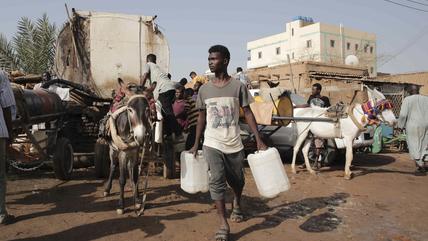An uncertain future
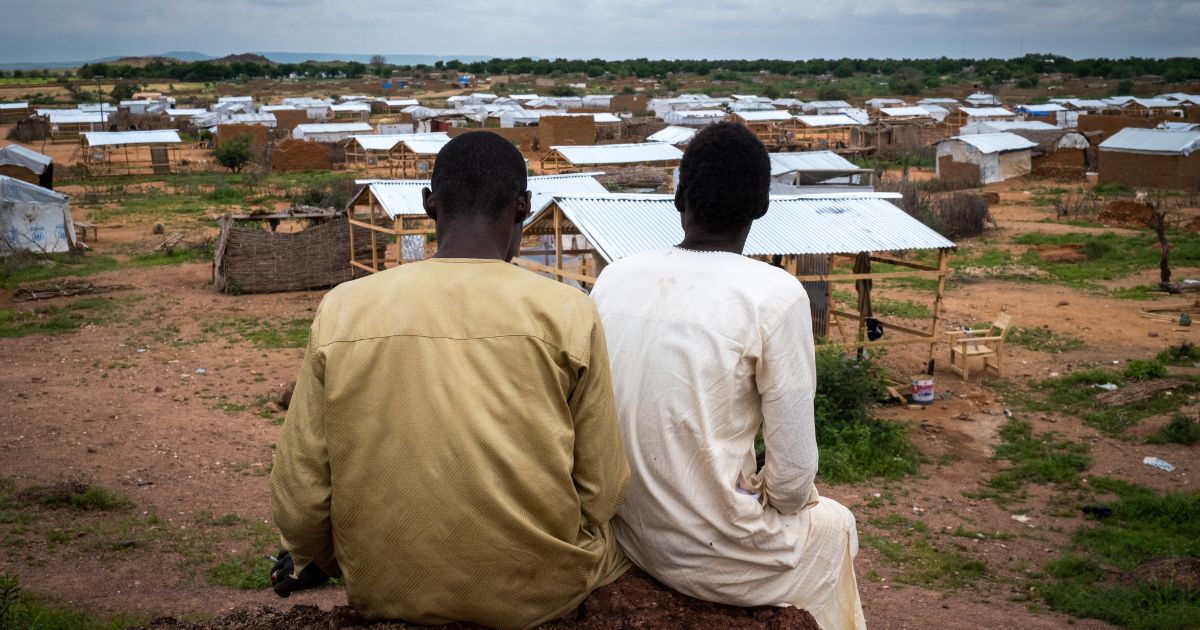
“This is the Adré camp, which is attracting the world's attention,” says Sebastien Arrivé, looking out over a landscape of makeshift dwellings built from twigs and worn canvas, stretching as far as the eye can see. Arrivé leads humanitarian operations at the camp for Atlas Logistique, the logistics division of NGO Handicap International (HI). More than 250,000 people have settled on this site which, under international law, is not even a camp, but merely a transit point. This distinction means there is no long-term investment here as there is in the other camps.
Adré, a Chadian town in the Ouaddaï region just next to the Sudanese border, is today the focus of a crisis that is much larger than itself. Due to the lack of transport infrastructure, the far east of Chad is isolated from the rest of the country, particularly from the capital N'Djaména in the west. Long, bumpy, ochre-coloured dirt tracks through untouched, biodiverse landscapes are the only routes to the town.
The region was transformed by war in neighbouring Sudan, which broke out at the end of April 2023 between two opposing groups. On one side is the Sudanese Armed Forces (SAF), led by Abdel Fattah al-Burhan, who has ruled the country since the coup d'état in 2021. On the other is the Rapid Support Forces (RSF), formed in 2013, whose leader Mohamed Hamdan Daglo seeks to seize power.
The violence, which has been particularly intense in the capital Khartoum and the region of Darfur, has caused the displacement of over 11.5 million people, including around 5 million children, who have fled to other regions or neighbouring countries. 640,000 Sudanese refugees have crossed the border into Chad. Humanitarian actors are mobilising in the face of this huge crisis in Chad, which is among the least developed countries in the world according to the United Nations HDI rankings.
"It's a conflict that I don't think all the players saw coming,” says Xavier Creach, Deputy Regional Director of the United Nations High Commissioner for Refugees (UNHCR). The war has been marked by an “extraordinary level of human rights violations,” he continues. “After 29 years with the UNHCR, I can't get used to these human tragedies, to the women who saw their husbands and children burnt alive in their homes, to the rapes, to the attacks on civilians trying to flee.”
Dangerously close to the border
The Adré camp is "an overcrowded shanty town," says Eric Ndiramiye, head of HI's rehabilitation programmes in the region. "The refugees are only supposed to stay here for a maximum of one month to complete the formalities associated with their arrival, and then leave for a real camp. So there is virtually no care."
As Alida Mahoro, the technical manager of HI's mental health programmes, explains, many of the refugees have been living here for over a year: "Most of them are resisting the idea of moving to other camps, which may be organised and equipped, but some of them feel that these camps are completely isolated. Life is livelier here because the refugees are close to the town. So they can work, set up small businesses and earn a bit of money."
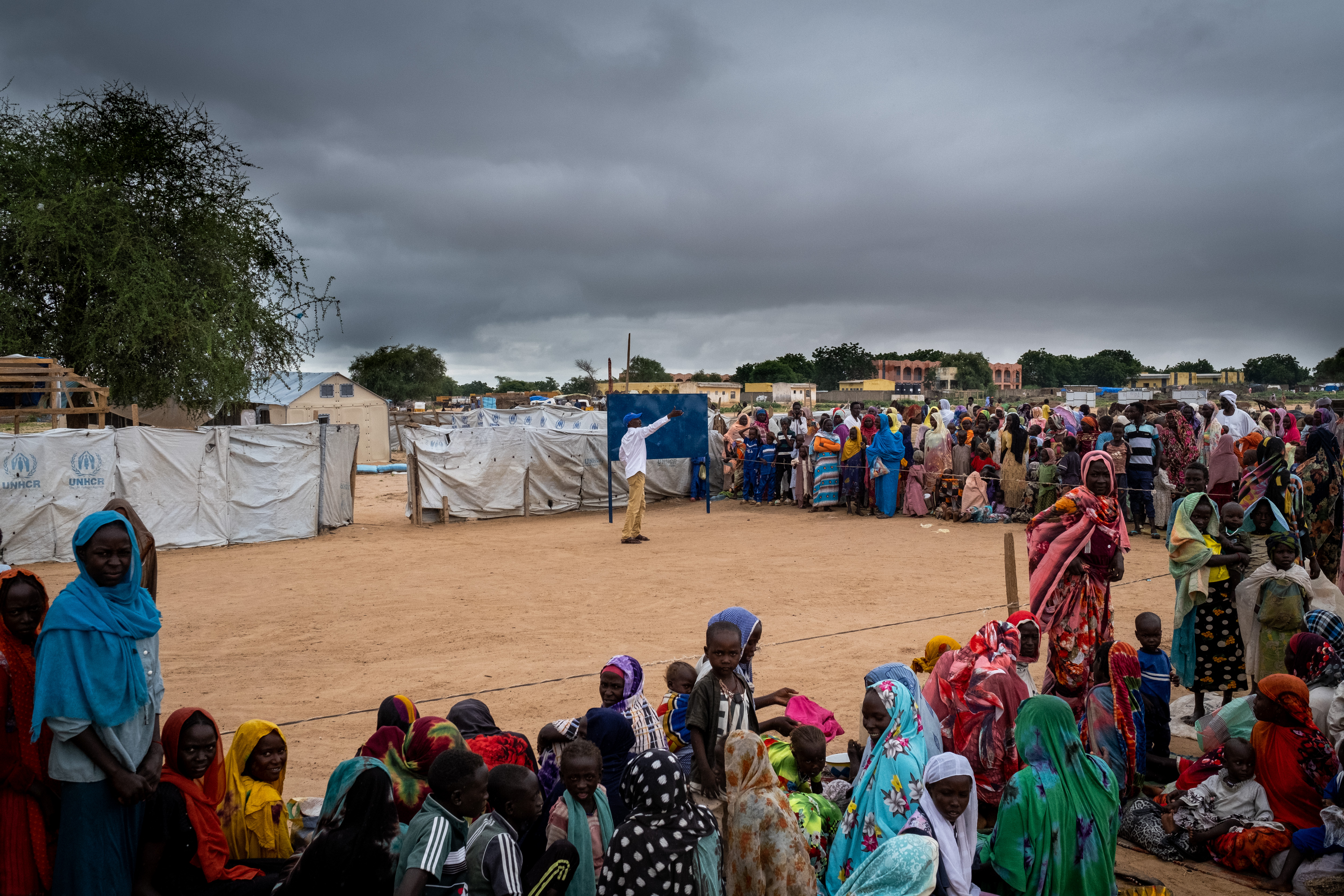
The boundary between this informal camp and the town of Adré seems to be gradually disappearing, and a real village atmosphere can be observed at the site's entrance. In the early hours of the morning, a noisy market springs up, with men transporting goods by horse or moped and women setting up stalls to sell food.
Just next door, around a hundred people, mainly women, children and a few elderly people, wait silently in the rain in front of the UNHCR registration tents. They have arrived from Sudan during the night.
A key problem with the site, Creach explains, is that it is too close to Sudan: "For their own safety, the refugees absolutely must be kept away from the border. When you're only a few kilometres away, the risk of attacks from the country of origin is extremely high". Last year, a shell fired by a militia from Sudan fell on the site, injuring one person. "Having a large number of refugees in border areas means running the risk of the conflict spilling over. There is also the possibility that armed fighters could slip in among the refugees. For this reason, our objective is to keep the refugees ideally 50 kilometres from the border," Creach says.
Fleeing atrocities in Darfur
Further south, a two-hour drive away, the Aboutengue camp comes into view. There are many more NGOs present here than in Adré, providing essential services such as healthcare and education. Small plots of land, laid out in a grid pattern and divided by branches planted in the ground, are home to each family. Each plot includes a basic wooden dwelling covered with a tarpaulin, next to which some of the families have set up a smaller shelter to welcome visitors. Some use their land to grow sorghum, its bright green leaves standing out against the camp's dull monochrome.
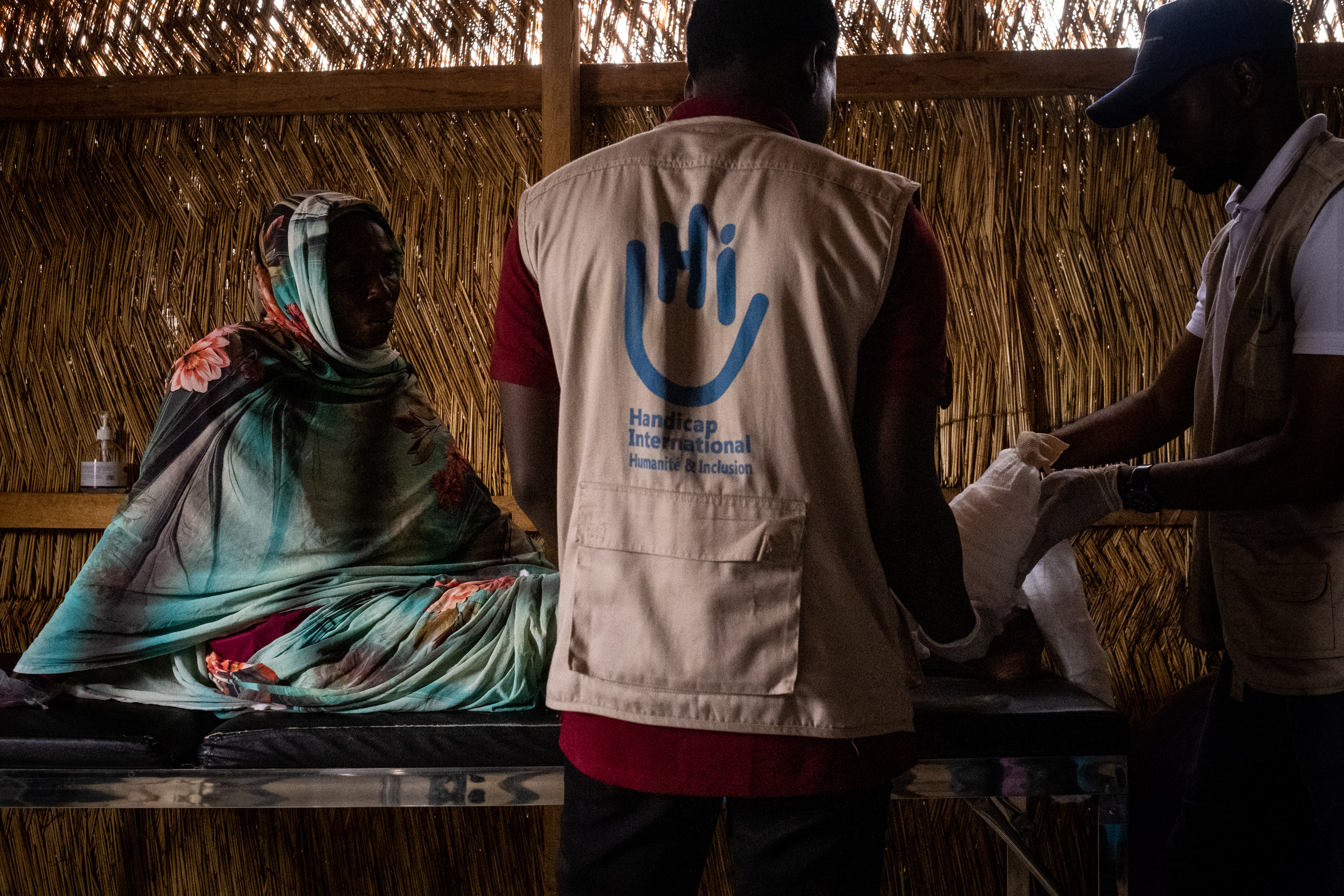
Hastily created in June 2023, this settlement is home to 53,000 refugees and subdivided into numbered districts: Block 1, Block 2, Block 3, etc. It's impossible not to be struck by the huge number of children who live here, playing on the paths while their mothers watch.
In HI's rehabilitation area, aid workers are trying to care for as many patients as possible in a short time frame. Demand is high. Around 40 people wait silently to receive physiotherapy for injuries whose aftereffects they are still suffering from months after their arrival. While the majority of the camp's inhabitants are women and children, a significant number of men come here for treatment.
One of them, Moussa, a 40-year-old father of two, is from the Sudanese town of El-Geneina, the capital of West Darfur. He arrived in Chad in June 2023 after a month and a half at the heart of the conflict. "When the war started, explosives were falling everywhere. My family and I moved to a place where there wasn't yet any violence. I looked after my children and the elderly while continuing to go back and forth between the town and our old house until the day I was wounded."
On that day, he was attacked by five soldiers and shot in the left arm. Once his assailants had left, Moussa lay on the ground and smeared the blood from his wound over his body to pass himself off as dead. "Other warriors then passed in front of me and kicked me. I didn't move and, thinking I was dead, they finally left. I stayed like that until nightfall."
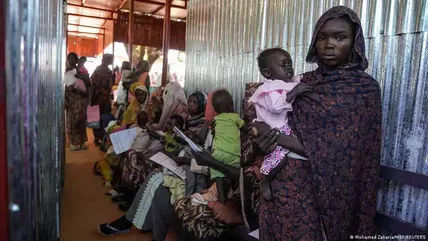
"We haven't lived in dignity for a long time"
In her debut novel "A Mouth Full of Salt", Sudanese author and physician Reem Gaafar tells the intertwined stories of three women who are confronted with injustice. A conversation about responsible writing, role models and the forgotten war in Sudan
When he returned home, his mother improvised bandages from handkerchiefs. It was then that he decided it was time to leave the country. He, his mother and his two sons joined others heading toward the border. But when his injuries made walking difficult, the group had to move on without him.
It was at sunrise the next day that a Médecins Sans Frontières vehicle combing the area picked him up. A doctor was able to give him emergency treatment and, two days later, he was taken to the hospital in Adré where he was reunited with his family. “Thank God my children and parents are safe, but I have lost a lot of people close to me.”
A system under strain
To compensate for the lack of transport infrastructure in the region, the United Nations Humanitarian Air Service (UNHAS) fleet has been deployed in Chad. It provides an essential service to humanitarian workers. Adré now has its own runway, rebuilt at the start of the crisis, and has become the base for NGOs working in the region.
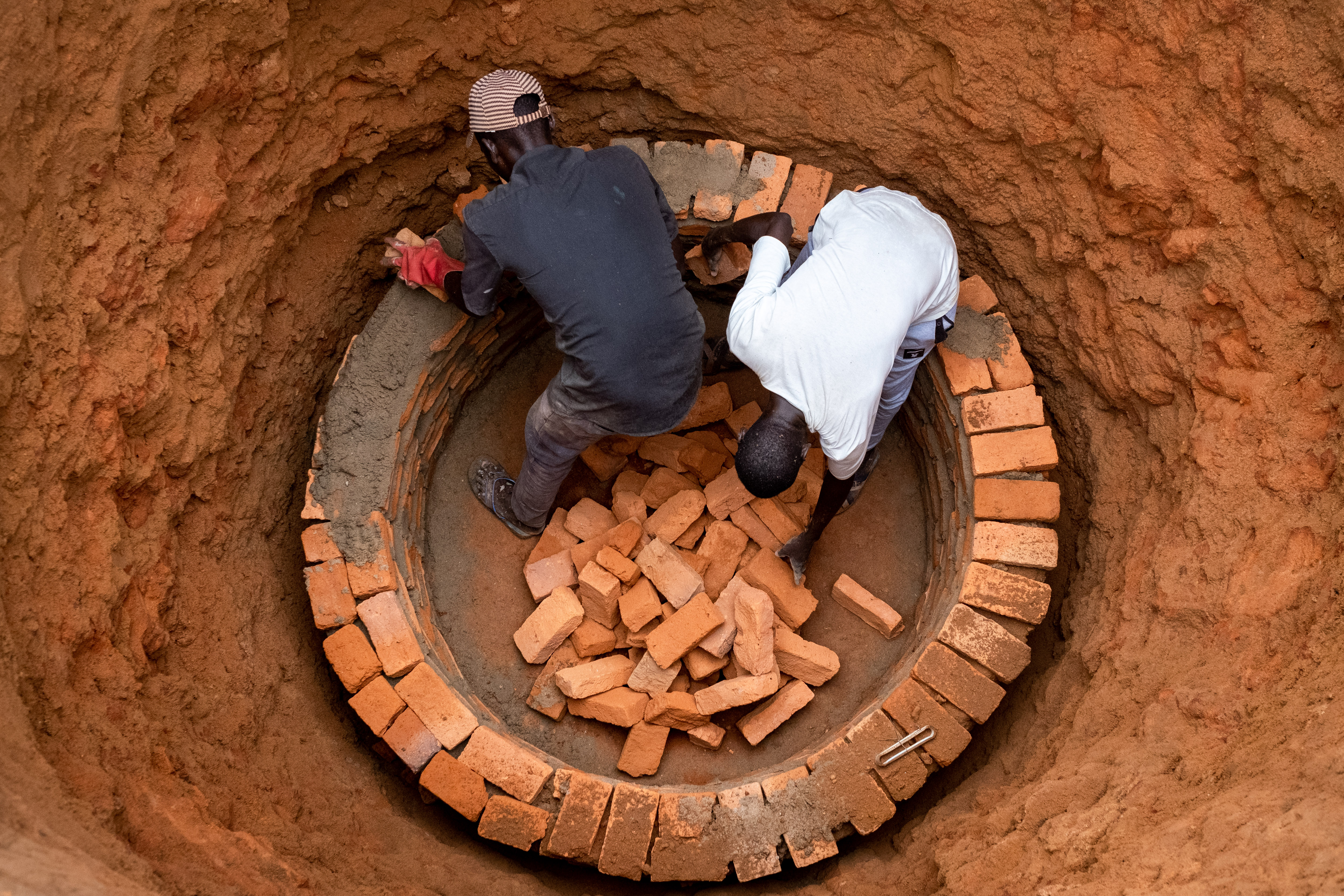
"Our main aim at the moment is to find funding for temperature-controlled facilities," says Arrivé of Atlas Logistique. "We have to transport and store medicines in air-conditioned spaces. A solar energy system with a backup generator would be needed to enable very precise temperature monitoring." It's an installation that requires major investment. "We are unable to stockpile medicines, which is what our partners have been asking for most,” says Arrivé. Adré currently faces a hepatitis E epidemic and has recorded cases of meningitis, yellow fever, dengue and suspected cases of leprosy. "We're very worried about Mpox", says Arrivé, "but so far there have been no cases."
The humanitarian response in Chad struggles with chronic underfunding. "I think I can speak for all humanitarian actors when I say that the challenge is enormous", says Creach, "because we are in a financial situation where our priorities are constantly being revised downwards. We need $630 million for the whole of Chad. We have only received a quarter. So we're doing a quarter of what we should be doing, and three-quarters of the population's needs are not being met."
There is still a long way to go to find lasting solutions that will enable the 640,000 refugees in Chad to restart their lives in dignified conditions. "In the camps, the population is extremely young. They come from the urban centres of Darfur", says Creach. "They don't want to be here for 20 years."
"I think it's our job to offer these young people local options. There are at least two 'bad' options", Creach continues. "The first is recruitment by an armed group, and the second is that they feel obliged to risk their lives crossing the Sahara or the Mediterranean Sea. We have a duty to offer these young people prospects and opportunities for the future."
© Qantara.de
